Breast milk baths have been a popular practice for centuries, and many mothers swear by its benefits. However, the use soap in breast milk baths remains a controversial topic.
Some mothers believe that soap can harm the delicate skin of their babies, while others argue that it is necessary to keep their babies clean. In this article, we will explore the use of soap in breast milk baths and provide a practical guide for mothers who wish to try this practice.
Breast milk baths involve adding breast milk to a baby’s bathwater. The practice is believed to have numerous benefits, including moisturizing the skin, soothing diaper rash, and providing nutrients to the baby’s skin.
Breast milk contains antibodies that can help fight off infections and boost the immune system. It is also rich in vitamins and minerals that can nourish the skin.
Breast milk baths have numerous benefits for babies, including moisturizing the skin, soothing diaper rash, and providing nutrients to the skin. Some mothers also believe that breast milk baths can help with eczema and other skin conditions.
However, the use of soap in breast milk baths remains a controversial topic, as some mothers believe that soap can harm the delicate skin of their babies.
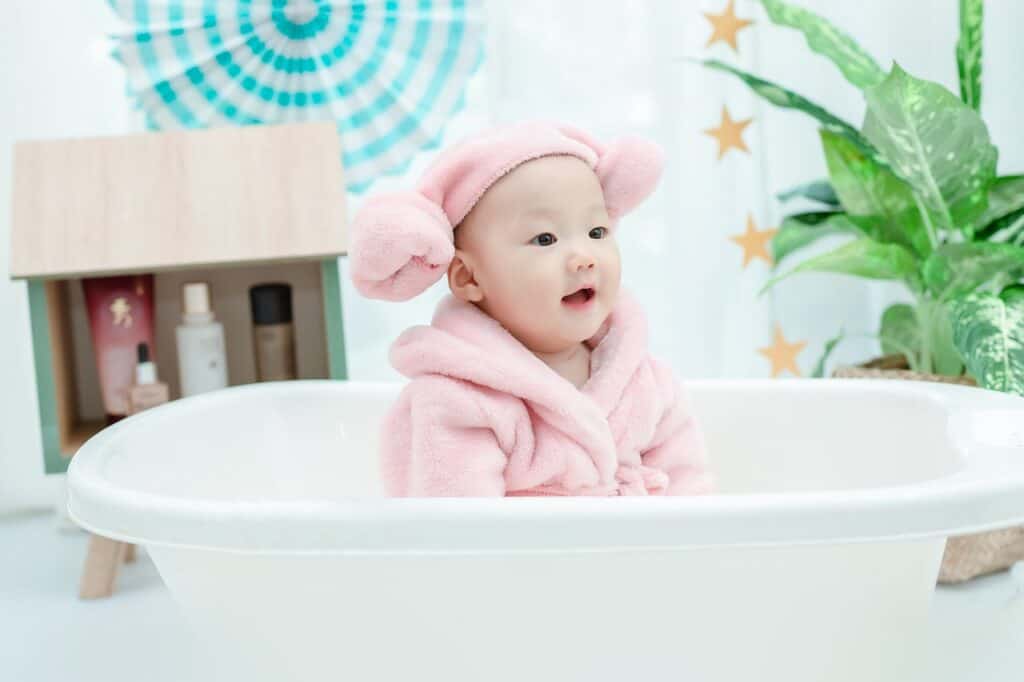
Key Takeaways
- Breast milk baths involve adding breast milk to a baby’s bathwater and have numerous benefits for babies, including moisturizing the skin, soothing diaper rash, and providing nutrients to the skin.
- The use of soap in breast milk baths remains a controversial topic, as some mothers believe that soap can harm the delicate skin of their babies.
- It is important for mothers to consult with their pediatricians before trying breast milk baths and to follow a practical guide to ensure the safety and effectiveness of the practice.
1. Understanding Breast Milk Baths
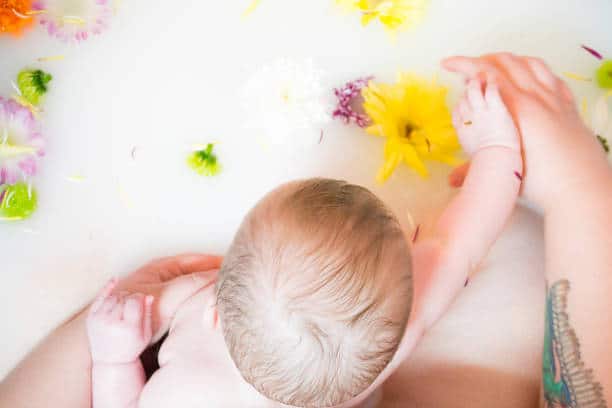
Breast milk baths have become increasingly popular among new mothers as a way to soothe and nourish their babies’ skin. But what exactly is a breast milk bath, and how is it made?
A breast milk bath is simply a bath that incorporates breast milk into the water. This can be done by adding expressed breast milk directly to the bathwater or by using breast milk soap or bath products.
The idea behind a breast milk bath is that the natural antibodies and nutrients found in breast milk can help to soothe and protect a baby’s delicate skin.
To make a breast milk bath, start by expressing some breast milk into a clean container. You can then add the breast milk directly to the bathwater or use it to make a breast milk soap or bath product.
There are many different recipes and methods for making breast milk soap and bath products, so be sure to do your research and follow a trusted recipe.
When using a breast milk bath, it’s important to remember that breast milk is not a substitute for regular bathing or hygiene practices. While breast milk can help to soothe and nourish the skin, it is not a replacement for soap and water.
It’s also important to be mindful of any allergies or sensitivities your baby may have to breast milk or other ingredients in your bath products.
In summary, a breast milk bath is a bath that incorporates breast milk into the water or bath products. While breast milk can provide benefits for a baby’s skin, it should not be used as a replacement for regular hygiene practices.
Always be sure to follow trusted recipes and be mindful of any allergies or sensitivities.
2. Benefits of Breast Milk Baths
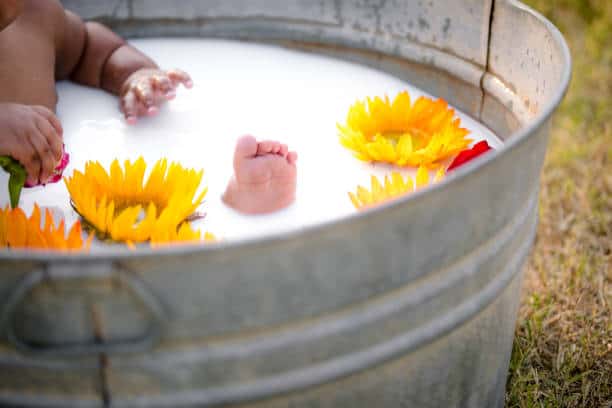
Breast milk has several benefits for babies, including its ability to heal and protect their delicate skin. Breast milk baths are becoming increasingly popular due to their numerous health benefits.
Here are some of the benefits of breast milk baths:
Moisturizes and Soothes Skin
Breast milk contains natural oils, proteins, and fats that act as a natural moisturizer and soothe dry, flaky, and irritated skin. The lauric acid found in breast milk has antibacterial and anti-inflammatory properties, making it an effective treatment for skin conditions such as eczema, diaper rash, and cradle cap.
Provides Nutrients and Antibodies
Breast milk is rich in vitamins, nutrients, and immunoglobulin A, which helps protect babies from infections and boosts their immune system. When used in a bath, breast milk can provide these nutrients and antibodies to a baby’s skin, helping to protect and nourish it.
Helps Heal Cuts and Infections
Breast milk contains antibodies that help fight infections and promote healing. When used in a bath, breast milk can help heal cuts, scrapes, and other skin injuries, as well as reduce inflammation and redness caused by bug bites.
Gentle and Safe for Sensitive Skin
Breast milk is gentle and safe for a baby’s delicate skin, making it an ideal alternative to harsh soaps and chemicals. Breast milk baths can help soothe and protect sensitive skin, reducing the risk of skin irritation and other skin issues.
Overall, breast milk baths offer numerous health benefits for babies, including their ability to moisturize, nourish, and protect delicate skin. By providing natural nutrients and antibodies, breast milk baths can help promote healing and reduce the risk of skin conditions and infections.
3. Practical Guide to Breast Milk Baths
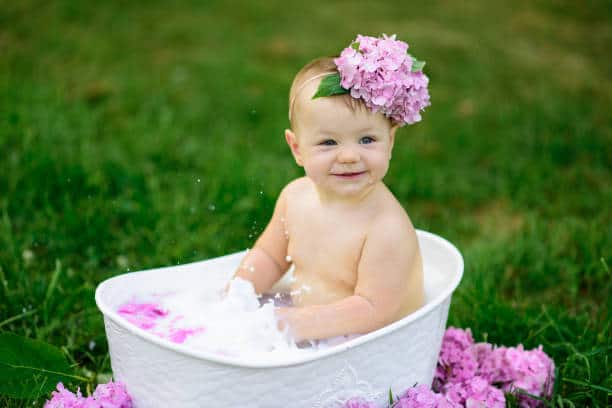
Breast milk baths are becoming increasingly popular among parents who want to give their babies a natural and nourishing bath experience. Here is a practical guide to help you get started.
Supplies Needed
- Baby bathtub
- Lukewarm water
- Frozen breast milk or pumped milk
- Towels
- Washcloths
Instructions
- Fill the baby bathtub with lukewarm water. The water should be at a comfortable temperature for your baby.
- Add a few ounces of frozen breast milk or pumped milk to the water. You can use a breast milk storage bag to freeze the milk into a flat sheet, which makes it easier to break off pieces to add to the bath.
- Swirl the milk around in the water to disperse it evenly.
- Place your baby in the bath and let them play and splash in the milk-infused water for 10-15 minutes.
- Use a washcloth to gently clean your baby’s skin. You can also use the milk-infused water to rinse their hair.
- Once the bath is finished, rinse your baby with clean water and wrap them in a towel to dry.
Milk Supply and Freezing
Breast milk baths are a great way to use up excess milk supply. If you have a large amount of milk that you won’t use for feeding, consider freezing it in breast milk storage bags for later use in baths.
Liquid Gold
Breast milk is often referred to as “liquid gold” due to its numerous health benefits. When used in a bath, breast milk can help soothe and moisturize your baby’s skin.
Play and Relaxation
Breast milk baths can be a fun and relaxing experience for your baby. The milk-infused water can help calm and soothe your baby, making bath time a more enjoyable experience.
Precautions
While breast milk baths are generally safe, it’s important to take a few precautions:
- Make sure the milk is fully thawed before adding it to the bath.
- Don’t add too much milk to the bath, as it can make the water too slippery and difficult for your baby to sit in.
- Always supervise your baby during the bath to ensure their safety.
4. Breast Milk Bath and Soap
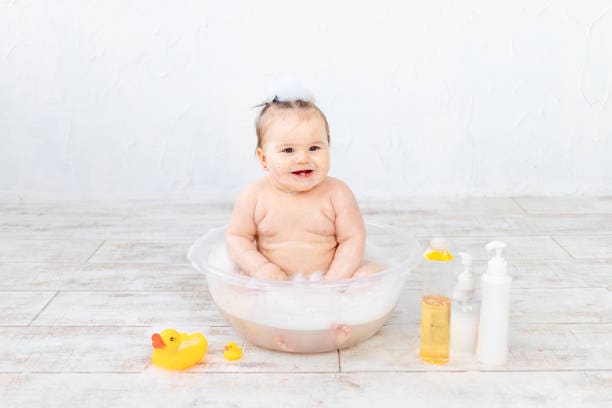
Breast milk baths have gained popularity in recent years due to the numerous benefits they offer. Breast milk is rich in nutrients and antibodies that help in nourishing and protecting the skin.
However, some people wonder whether they should add soap to the bathwater when taking a breast milk bath.
Soap can be added to a breast milk bath, but it is not necessary. Breast milk alone is sufficient to clean the skin.
In fact, adding soap to the bathwater may wash away some of the beneficial properties of breast milk. Additionally, some types of soap may cause irritation or dryness, especially for those with sensitive skin.
It is important to note that breast milk soap is not the same as adding breast milk to a bath. Breast milk soap is made by mixing breast milk with lye and other ingredients to create a bar of soap.
While breast milk soap may provide some of the benefits of breast milk, it is not necessary for a breast milk bath.
Essential oils can also be added to a breast milk bath for additional benefits. However, it is important to use caution when adding essential oils, as some oils may cause irritation or allergic reactions.
It is best to consult with a healthcare provider or aromatherapist before adding essential oils to a breast milk bath.
In summary, adding soap to a breast milk bath is not necessary and may wash away some of the beneficial properties of breast milk. Breast milk soap is also not necessary for a breast milk bath.
Essential oils can be added for additional benefits, but caution should be taken when selecting and using oils.
5. Additional Uses of Breast Milk
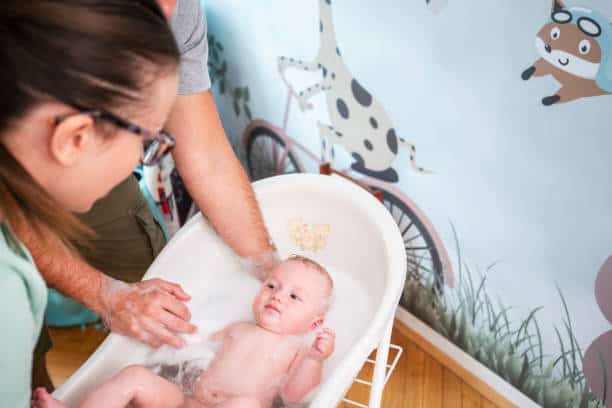
Breast milk is not just for feeding babies. It has several other uses that can benefit both moms and babies. Here are some additional uses of breast milk:
Blocked Tear Ducts
Breast milk can be used to treat blocked tear ducts in babies. Blocked tear ducts can cause excessive tearing, discharge, and redness in the eyes.
Applying a few drops of breast milk to the affected eye can help clear the blockage and reduce the symptoms.
Breast Milk Lotion
Breast milk can be used to make a natural and baby-safe lotion. Breast milk contains palmitic acid, oleic acid, and vaccenic acid, which are all beneficial for the skin.
To make breast milk lotion, mix equal parts of breast milk and baby-safe lotion. Apply the lotion to the skin as needed.
Sore Nipples
Breast milk can help soothe sore nipples in breastfeeding moms. Apply a few drops of breast milk to the nipples after nursing and let it air dry.
The antibacterial properties of breast milk can help prevent infections and promote healing.
Winter Months
Breast milk can help protect babies from the cold and flu during the winter months. Breast milk contains antibodies that can help boost the baby’s immune system and reduce the risk of infections.
Infant Eczema
Breast milk can be used to treat infant eczema. Eczema is a common skin condition in babies that causes dry, itchy, and inflamed skin.
Applying breast milk to the affected area can help reduce inflammation and soothe the skin.
Bathe
Breast milk can be added to a baby’s bath to help moisturize the skin. Breast milk contains linoleic acid, which is a fatty acid that helps keep the skin hydrated and healthy.
Photo Op
Breast milk can be used for a unique and memorable photo op. Some parents choose to have a professional photographer take pictures of their baby covered in breast milk.
This can be a fun and creative way to celebrate breastfeeding and the bond between mom and baby.
In summary, breast milk has several additional uses that can benefit both moms and babies. From treating blocked tear ducts to moisturizing the skin, breast milk is a versatile and natural resource that can be used in many ways.
6. Consulting with a Pediatrician
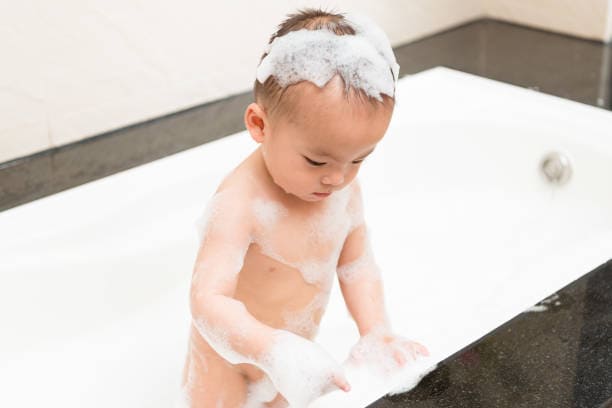
When it comes to deciding whether or not to add soap to a breast milk bath, it’s always best to consult with a pediatrician. They have the knowledge and expertise to provide guidance and recommendations based on the individual needs of the baby.
Pediatricians can help parents understand the benefits and risks of using soap in a breast milk bath. They can also provide advice on the type of soap to use, if any, and the appropriate amount to add.
In addition, pediatricians can help parents identify any potential skin sensitivities or allergies that their baby may have, which could be exacerbated by the use of soap in a breast milk bath. They can also provide guidance on how to properly care for a baby’s delicate skin, including recommendations for moisturizing and avoiding irritants.
Overall, consulting with a pediatrician is an important step in making informed decisions about a baby’s bath time routine. They can provide valuable insights and recommendations that can help ensure a baby’s skin stays healthy and comfortable.
Frequently Asked Questions
How do I prepare a breast milk bath for my baby?
To prepare a breast milk bath for your baby, simply add some fresh or thawed breast milk to warm bath water. The amount of breast milk you add is up to you, but a good starting point is about 1-2 ounces per bath. Swirl the water around to mix the breast milk evenly and then place your baby in the bath.
Can breast milk baths help with baby rash and acne?
Breast milk baths have been reported to help with baby rash and acne due to the antibacterial and anti-inflammatory properties of breast milk. However, it is important to note that not all rashes or acne may be improved by a breast milk bath, and it is always best to consult with a pediatrician for proper diagnosis and treatment.
Are breast milk baths beneficial for moms?
Breast milk baths may have some benefits for moms, such as soothing sore nipples and reducing the risk of mastitis. However, more research is needed to fully understand the potential benefits for moms.
Is it safe to use cow milk for baby baths?
It is not recommended to use cow milk for baby baths as it can cause skin irritation and allergic reactions. Breast milk is specifically designed for human babies and is the safest and most natural option for a milk bath.
How do I do a milk bath for baby photoshoots?
To do a milk bath for baby photoshoots, fill a shallow tub with warm water and add breast milk. Place your baby in the tub and add flowers or other props as desired. It is important to supervise your baby at all times and to keep the water level low to avoid any accidents.
Can I give my baby a milk bath without breast milk?
While breast milk is the preferred option for a milk bath, it is possible to use formula or powdered milk as a substitute. However, it is important to dilute the milk properly and to avoid using cow’s milk, as mentioned earlier. It is always best to consult with a pediatrician before trying any new bath routine for your baby.

Iesha is a loving mother of 2 beautiful children. She’s an active parent who enjoys indoor and outdoor adventures with her family. Her mission is to share practical and realistic parenting advice to help the parenting community becoming stronger.
